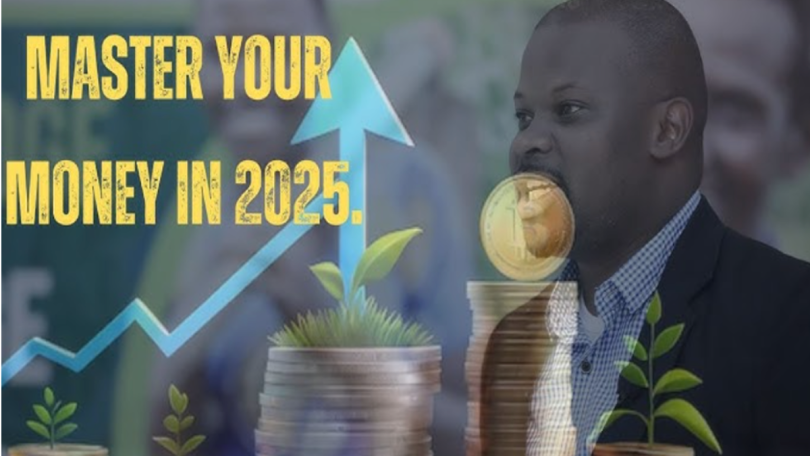In a world of economic uncertainty, rising living costs, and digital distractions, managing your personal finances is no longer optional—it’s essential. The good news? You don’t need a finance degree or a six-figure income to take control of your money.
In this in-depth guide, we’ll walk through realistic, actionable, and modern financial advice that makes sense for everyday people. Drawing insights from some of the best personal finance articles and proven money management strategies, we’ll cover everything from budgeting and saving to investing and financial mindset shifts that work in 2025.
Let’s begin your journey toward smarter financial decisions and long-term peace of mind.
1. Why Financial Education Is the New Wealth
Most people were never taught how to manage money in school. As a result, they fall into cycles of debt, overspending, and poor planning. But the information gap is closing. More people are turning to blogs, podcasts, and personal finance communities for help—and that’s a smart move.
One of the most accessible resources for everyday readers is Kindafrugal.com, a site packed with financial advice that makes sense for normal people, not Wall Street analysts.
From learning to save smarter to setting achievable goals, this kind of education is helping readers worldwide take small steps toward major financial wins.
2. Budgeting: The Foundation of Every Financial Goal
Without a budget, you’re flying blind. Budgeting isn’t about limiting your fun—it’s about allocating your money with intention.
💡 Modern Budgeting Methods That Work in 2025
a. 50/30/20 Rule
- 50% Needs (rent, food, utilities)
- 30% Wants (entertainment, eating out)
- 20% Savings & Debt Repayment
b. Zero-Based Budgeting
Every dollar has a job. At the end of the month, your income minus expenses should be zero—because every dollar is assigned.
c. Reverse Budgeting
Prioritize saving and investing first, then spend what’s left.
Use free tools like Mint, YNAB (You Need A Budget), or Google Sheets to track your budget. Even writing it down in a notebook works if you stay consistent.
3. Saving Smart: Why You Need Both Short- and Long-Term Stashes
Saving money isn’t just about having a rainy-day fund—it’s about buying your future freedom.
3. Levels of Savings You Need
- Emergency Fund
- Goal: 3–6 months of living expenses
- Use: Job loss, medical bills, car repairs
- Where: High-yield savings account
- Short-Term Goals
- Examples: Vacation, new laptop, moving costs
- Where: Regular savings or money market account
- Long-Term Security
- Retirement, investments, education
- Where: IRAs, 401(k)s, ETFs, mutual funds
The best personal finance articles emphasize automation—set up automatic transfers to your savings each payday so you don’t have to think about it.
4. Destroying Debt (Without Losing Your Sanity)
In 2025, interest rates are still fluctuating, and inflation continues to make debt a serious burden. Whether it’s credit cards, student loans, or personal loans, getting rid of debt fast is key to financial peace.
Debt Repayment Strategies
a. Snowball Method
Pay off the smallest debt first to gain motivation.
b. Avalanche Method
Pay off the highest interest debt first to save more money.
c. Balance Transfer Cards & Refinancing
If you qualify for low- or no-interest credit offers or refinancing on loans, use them to consolidate and reduce interest.
Also consider negotiating with lenders—many are willing to work with you if you’re upfront.
5. Investing Basics: Don’t Wait for “Someday”
The biggest myth about investing? That it’s only for rich people. The truth: starting early—even with $50/month—matters more than the amount you invest.
Beginner-Friendly Investment Options
- Robo-advisors (like Betterment or Wealthfront) for automated portfolios
- Index funds & ETFs for low-cost, diversified investing
- Retirement accounts like Roth IRAs and 401(k)s with employer match
- Dividend stocks for passive income
Time is your biggest asset in investing. Even modest monthly contributions can grow into six-figure retirement accounts if you start early and stay consistent.
6. Frugality Without Sacrifice
Being frugal isn’t about being cheap—it’s about aligning your spending with your values. Spend on what matters to you and cut back on what doesn’t.
Practical Frugal Living Tips
- Cancel unused subscriptions (use services like Trim or Rocket Money)
- Cook at home 4+ days a week
- Shop second-hand or use Facebook Marketplace
- Use cashback and coupon apps like Rakuten, Honey, or Ibotta
- Choose quality over quantity—buying well-made items less often saves money
Being frugal also means saying “no” to lifestyle creep—the tendency to spend more as you earn more.
7. Building Multiple Streams of Income
The modern economy demands income flexibility. Relying on a single source is risky. One of the best financial moves you can make is creating secondary or passive income streams.
Side Hustle Ideas for 2025
- Freelance writing, design, or coding
- Print-on-demand or Etsy shops
- YouTube, TikTok, or blogging (with affiliate marketing)
- Digital products (courses, templates, eBooks)
- Real estate (if you have capital) or REITs (if you don’t)
Check out platforms like Fiverr, Upwork, Gumroad, and Etsy to launch quickly.
Bonus: You’ll learn business skills along the way—and those are lifelong money-makers.
8. Financial Mindset: The Invisible Key to Wealth
No matter how much you earn, if you don’t change your mindset, you’ll keep falling into the same traps.
Money Mindset Shifts That Matter
- From Consumer to Owner: Focus on acquiring assets (investments, property, businesses) instead of liabilities (cars, gadgets).
- From Scarcity to Abundance: There’s always more money to earn; focus on creating, not just cutting.
- From Impulse to Intention: Delay purchases. If you still want it after 48 hours, go for it.
You don’t need to be perfect—you just need to be intentional.
9. Teaching Kids (and Yourself) Financial Literacy
Teaching money habits early helps kids (and adults!) avoid costly mistakes later. Make it part of everyday conversation.
Simple Ways to Teach Kids About Money
- Use allowance to teach budgeting
- Let them “earn” money with tasks
- Encourage saving for short-term goals
- Introduce investing concepts using apps like Greenlight or BusyKid
Adults who missed early financial education can learn from practical blogs like Kindafrugal.com, which breaks down complex concepts into bite-sized, actionable advice.
10. Avoiding Common Money Mistakes
Even the most motivated people fall into money traps. Awareness is the first step to avoiding them.
Mistakes to Watch For
- Not having an emergency fund
- Carrying a credit card balance month to month
- Overspending on housing or transportation
- Ignoring retirement savings in your 20s/30s
- Lifestyle inflation after a raise
The good news: These mistakes can be fixed. The sooner you start, the easier the correction.
Recap: A 10-Step Financial Action Plan for 2025
| Step | Action |
| 1 | Track your spending for one month |
| 2 | Create a simple 50/30/20 or zero-based budget |
| 3 | Build a $1,000 emergency fund |
| 4 | Choose a debt repayment strategy |
| 5 | Open an IRA or start investing in ETFs |
| 6 | Set up automatic transfers to savings |
| 7 | Cancel 3 unused subscriptions this week |
| 8 | Start a $50/month side hustle |
| 9 | Read one personal finance article per week |
| 10 | Review your financial progress monthly |
Final Thoughts: Start Where You Are
Financial freedom isn’t about perfection—it’s about progress. You don’t need to do everything at once. Just pick one area to improve this week. Maybe it’s budgeting, maybe it’s paying off a small debt, maybe it’s starting a side hustle.
What matters is starting. As you build knowledge and habits, your money will work for you—not against you.
Let trusted sources like Kindafrugal be your go-to guides. The journey may be long, but the steps are simple—and the destination is 100% worth it.







